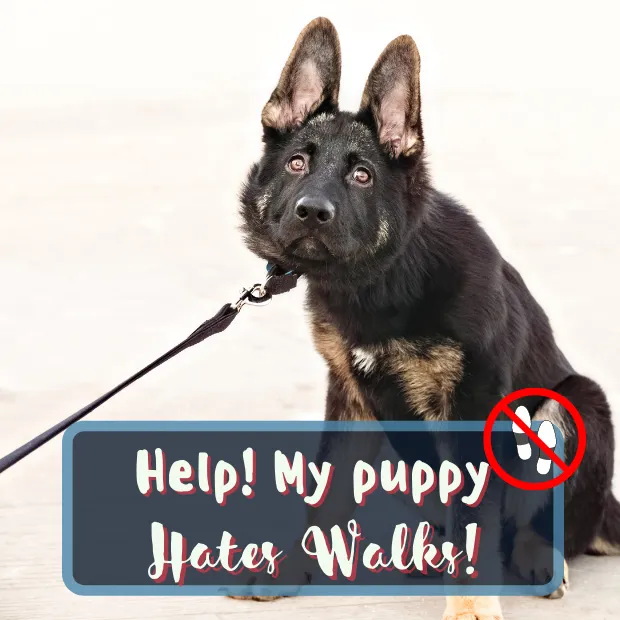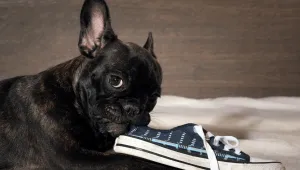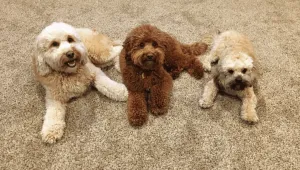If you’re having trouble getting your puppy to walk with a leash, don’t worry. This is a common problem that many people face. The key is to be patient and keep trying. Eventually, your puppy will get the hang of it.
If this sounds like you and it seems like your puppy hates walks, then read on for some quick tips that will help you get back out into the world with your pup!
It can be tough to walk your dog on a leash. Young dogs often refuse to walk and want to pull backwards, which makes it particularly difficult to walk them from your front door. To get around this problem, try these quick tips:
Table of Contents
ToggleDrive your puppy to the end of the road and then walk back.
Puppies can be reluctant to leave the safety of home, particularly if someone is still in the house, they might have Fear Of Missing Out (FOMO)! You can take the worrying aspect of the trip away by driving them to the end of the road and then walking back.
It’s also a great way to teach them that going in the car is fun. By driving to the end of the road you are getting them used to being in the car and away from home. This is especially useful since they will most likely need to be driven to their regular vet visits as they get older!
Spend some quality time together outside with your puppy.
The outside world is often overwhelming or frightening for puppies, which is why they frequently stall during walks. We can alter the connection they have with leaving the house by bringing some of their inside activities outdoors with us.
This means, instead of just walking them around the block aimlessly, we can spend some quality time together outside by playing fetch or tug in the front yard.
Doing this will not only help your puppy to get used to being outside, but it will also give them a positive association with leaving the house.
Playing outside the front of your house with their favorite toys, doing some scatter feeding with dried food, or bringing along a lickimat coated in pate or cream cheese are all good activities that will help your puppy learn that leaving the house isn’t scary.
Watch the world go by with your puppy.
Puppies may take a few minutes to comprehend and interpret what they’re seeing, especially if it’s their first time or if they were scared previously outside. If you’re patient and allow them to absorb everything, they’ll gradually come around.
A great way to do this is to sit on the front porch or in the front yard with your puppy and watch the world go by. This could be done with a cup of coffee in the morning or after work as a way to relax together.
You can also bring along some treats to keep their attention focused on you and not on anything that might worry them.
After a few minutes of this, you should notice your puppy start to calm down and take everything in. From there, you can begin to walk them around the block!
Remember, it takes time for puppies to get used to the world around them. Be patient and keep trying and eventually you’ll be able to take your puppy on walks with ease!
It’s critical to be consistent with walking your dog when he is more used to going outdoors. Even on days when you don’t want to, think of taking your dog for a walk as a must-do task just like feeding him and attending to his other needs.
With these hints at hand, soon you should have no trouble getting out of the house to go for walks! When they realize that going outdoors is genuinely enjoyable, they’ll be much more inclined to accompany you outside!
A little bit of time and patience is all it takes to get your puppy walking. By following these simple tips, you’ll be out and about in no time! Thanks for reading. Check out this article for more help with puppy socialization.
I hope you found this blog post helpful. If you have any questions or would like to share your own experiences, please leave a comment below!







